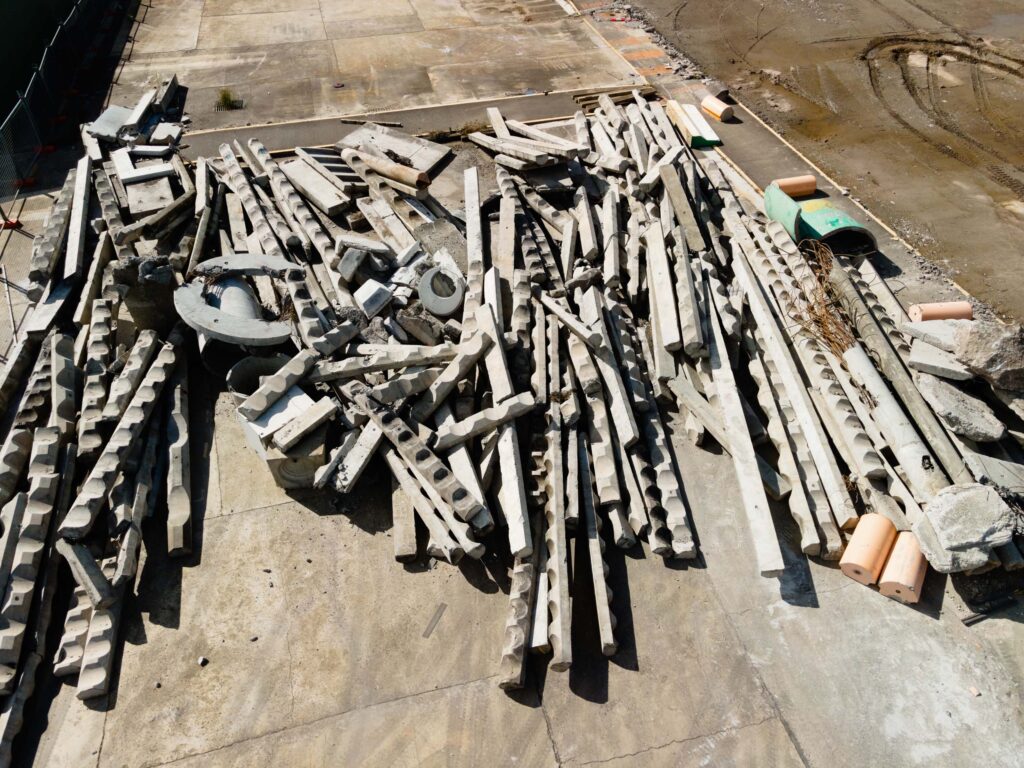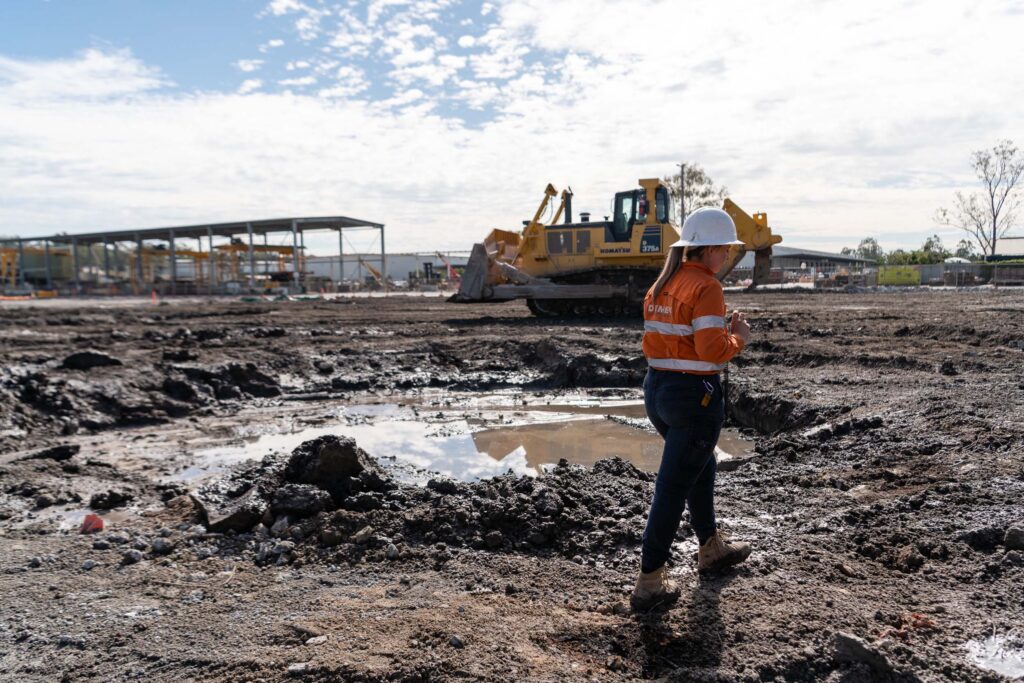Recycling on infrastructure projects: How we’re reaching our targets

What does it take to turn what was once swamp land into a site that’s safe to build on?
Our team on the Wacol Logistics Hub project can tell you.
Spanning an area in excess of 18 hectares, the project site is located in the outer western reaches of Brisbane.
It most recently operated under ownership of Rocla Concrete Pipes Limited when it was used as a production facility for precast civil concrete products.
The site was covered predominantly in hardstand storage areas and had several smaller buildings scattered across it. A small concrete batching plant owned by a separate company and located on the eastern boundary of the site, remained operational for the duration of the project.
At first glance, the site looks straightforward.
Relatively flat with grades of around one percent, you wouldn’t think leveling would be a challenge, however it’s what couldn’t be seen that presented a challenge.
Apart from the site being impacted by creek and waterway flooding, the Wacol Logistics Hub would be built on what was formerly a swampland; hardly an ideal combination. Additionally, there were other environmental, biodiversity, and infrastructure considerations due to the site’s location adjacent to a major motorway.
Local residents will recall the devastation of the January 2011 floods, and given the site could be impacted by creek and waterway flooding, we had an important job to make sure the build up could withstand these potential risks.

What we did: Wacol Logistics Hub
Our remit for the job included demolition of all above ground structures and removal of hazardous materials, which we approach by first disconnecting and abolishing all services running into the facility.
Plant and equipment were then brought in to demolish the structures on site. During this process materials were sorted into construction and demolition (C&D) waste, timbers, steel, concrete, and hazardous materials.
Once the structures were removed to slab level, excavators were fitted with rock breakers or hammers allowing us to process the concrete, stripping steel from the concrete and crushing it at site. Of significance is the fact that all concrete was recycled back into the site for subgrade improvement.

What does a tunnel have to do with leveling a swamp land?
Because of the type of ground we were working on, considerable efforts were focused on ground improvement. This required that we devise a build up of the ground that ensured its stability and strength, and would eliminate the need for ‘emergency’ concrete pores to level ground, as had been the approach by the former site owners. So much of this patch up work had been completed over time that in some places the concrete was over four metres deep, a function of the site’s ground quality and water level.
Underneath the concrete was unsuitable materials. Among the debris we found tyres, old timber sleepers, precast panels and pipes, steel drainage, steel cages, bricks, and plastic pots that were a remnant from the site’s former life as a plant nursery.
We started by using a high impact roller to identify soft spots throughout the site. Where soft spots were found, we excavated further to remove unsuitable material, which was then stockpiled on site.
The significant need for fill to bring the ground up by 1.8 metres meant the fortuitous availability of tunnel boring material from the Brisbane tunnel projects was a win for the team. In total, over 250,000 tonnes of material was required to bring it to a finished level.
By combining crushed concrete from the site with TBM material to vastly improve the compaction. Not only was this a bonus for us and our client, it also meant this virgin material taken from a major infrastructure project could be immediately repurposed without being stockpiled elsewhere.
Why was the TBM ideal for this project?
The TBM was comprised of fines ranging from 2 mm to 150 mm, a composition that is excellent for bridging the natural ground conditions, which at Wacol were very wet and unstable. From natural ground to finished bulk earthworks level, we raised 1.8 metres, completing this in 300 mm increments to allow for correct compaction.
Together with our geotechnical subcontractor, we used hot mapping to identify surface levels for the duration of the project, rather than rely solely on surveying; a method which was faster and more efficient.
Some exciting statistics emerged from this project. Over 70 percent of the site has been made up using recycled materials, a remarkable feat by any standard. Furthermore, we have been able to recycle 99 percent of all materials from the site, including 70,000 tonnes of concrete, 1,200 tonnes of steel, and around 50 tonnes of timber.
We have also taken the opportunity to develop capability in our team too, with our core team of operators gaining valuable skills and experience in this type of civil infrastructure project.

DEMEX is a specialist commercial demolition contractor for industrial infrastructure projects. We understand the importance of demolition performed to the highest standard to achieve overall project success for new infrastructure, including recycling of materials. For information on efficient, safe, and cost effective ways to make your project site safe to build on, download our capability statement or contact us directly on info@demex.com.au.


